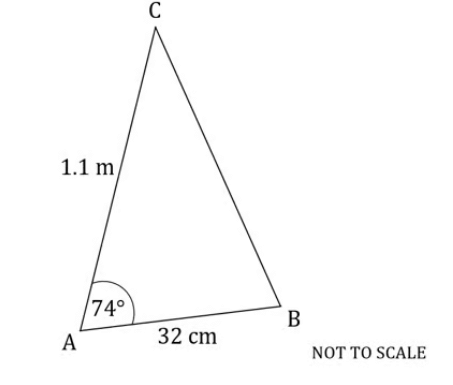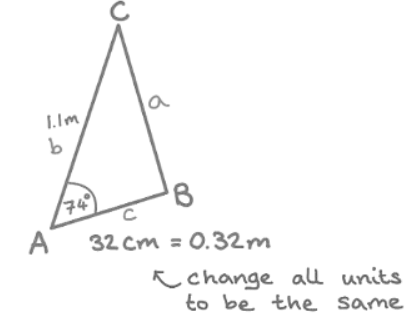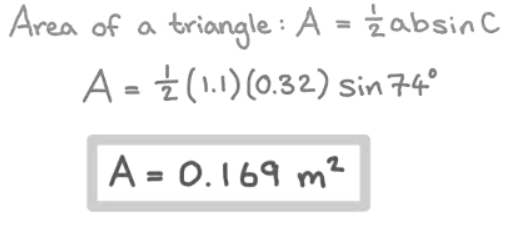Year 11 Exam > Year 11 Notes > Mathematics for GCSE/IGCSE > Area of a Triangle
Area of a Triangle | Mathematics for GCSE/IGCSE - Year 11 PDF Download
How do I find the area of a non-right triangle?
- The area of any triangle can be determined using the formula:

- Where C is the angle between sides a and b
- Be careful to label your triangle correctly so that C is always the angle between the two sides
- Sin 90° = 1 so if C = 90° this becomes Area = ½ × base × height
Solved Example
Example: The following diagram shows triangle 
 Calculate the area of triangle.
Calculate the area of triangle.
Ans: Label the sides of the triangle:

The document Area of a Triangle | Mathematics for GCSE/IGCSE - Year 11 is a part of the Year 11 Course Mathematics for GCSE/IGCSE.
All you need of Year 11 at this link: Year 11
|
83 videos|120 docs
|
FAQs on Area of a Triangle - Mathematics for GCSE/IGCSE - Year 11
| 1. How do you calculate the area of a triangle? |  |
Ans. The area of a triangle can be calculated using the formula: Area = 1/2 x base x height.
| 2. What are the units for the area of a triangle? |  |
Ans. The units for the area of a triangle are typically squared units, such as square centimeters (cm²) or square meters (m²).
| 3. Can the area of a triangle be negative? |  |
Ans. No, the area of a triangle cannot be negative as it represents a physical quantity (area) which cannot have a negative value.
| 4. How do you find the height of a triangle if only the base and area are given? |  |
Ans. If the base and area of a triangle are given, you can find the height by rearranging the formula for the area of a triangle: height = 2 x (Area / base).
| 5. Is the formula for calculating the area of a triangle the same for all types of triangles? |  |
Ans. Yes, the formula for calculating the area of a triangle (1/2 x base x height) is the same for all types of triangles, regardless of their shape or size.
Related Searches





















